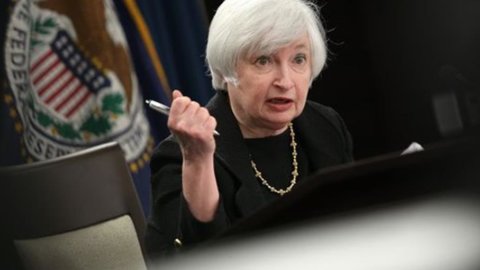It is used to say that, when politicians are unable to reach an agreement, a study commission is formed whose purpose, often, is only to slowly end up in nothing. Central banks, for their part, do not form commissions when there is disagreement within them, but when things go well enough not to make other measures urgent, which are kept on the back burner waiting for more turbulent times. Setting up a study commission, in these cases, serves not to leave the markets completely dry and to keep them in a state of hope. If it's not for this one, it will be for next time.
La European Central Bank often use study boards. His weapons are not infinite and should be kept for difficult times. Decisions to establish or prolong the Quantitative easing they have always followed the same path, pre-announcement, commission, resolution, all four to six months apart.
The ongoing Qe should end in February. Deciding now to extend it by six months doesn't change anything. Deciding it in December, with the US elections behind us and a foreseeable recovery in volatility, could save us from a less easy situation than the current one. If December is also calm, there will still be two months to decide, those two months, January and February, in which this year we have seen an explosion of negativity and distrust to get out of which the contribution of the BCE.
The same goes for the other measures that a market a bit too optimistic expected for today, including the expansion of Qe to central bank buying of bank bonds and stocks. We haven't even talked about it, Draghi replied hastily.
Indeed, right now not only Europe but the whole world seems unusually calm. Europe is growing at a regular rate of 1.6, America is more erratic but 2 percent should also be achieved this year. China remains clinging to its 6.5-7 percent. Oil is calm. The emerging ones, even without shining, are doing better than a year ago. Italian banks are giving some positive signals and European ones, as a whole, are slowly starting to lend money again. There are no financial crises, not even regional or sectoral ones. Exchange rates are balanced. Brexit is frozen.
The financial markets are either in deep sedation or in a slow and placid rise. New York is at an all-time high and curiously so is Moscow. Shanghai is composed and positive. London gains 10 percent since the beginning of the year.
What is quiet is not necessarily solid. There New York Stock Exchange it is supported, rather than by earnings, by European and Japanese Qe. Many big managers who foresee gloomy times (negatives include grandmasters such as Soros, Gundlach, Tudor Jones and Paul Singer) may be waiting for the election and December rate hike before attacking.
Even iffundamentals are more fragile of what it seems. The American re-acceleration is not that strong and some positive data from the past two months reflect a surge in auto sales due to temporary discounts that have already ended. China and Europe appear to be growing steadily, but structural weaknesses are still there. The big global problems of excess debt and zero-growth productivity have not receded an inch. Even the geopolitical framework is bubbling under a surface that only appears rippled.
We have therefore not come out of any tunnel, but we are incomparably better off than in January and February, at least in appearance. In this context, it would be wasted for central banks to use weapons and ammunition that could be much more useful in a few months. For this reason, we don't expect much from the Bank of Japan either, which will meet on 21 September, the same day on which the Fed will declare its readiness to raise rates, if not raise them.
September and October are historically the most propitious months for large or small falls in the stock markets. It is the season in which portfolios, weighed down by the increases of the first seven months, find themselves vulnerable to any negative news. This year, however, the correction was in January and February and wallets have not yet had time to recharge. Some managers and many individual portfolios are still underweight and are now hedging well behind schedule. The American elections, for their part, paralyze the Fed and nip in the bud any desire to raise rates.
We therefore expect an exceptionally calm September and October. On the other hand, the end of the year traditionally propitious for stock markets could be more turbulent than usual this year, even if we will perhaps have to wait until the first half of next year for a correction. There are no more seasons than once.





